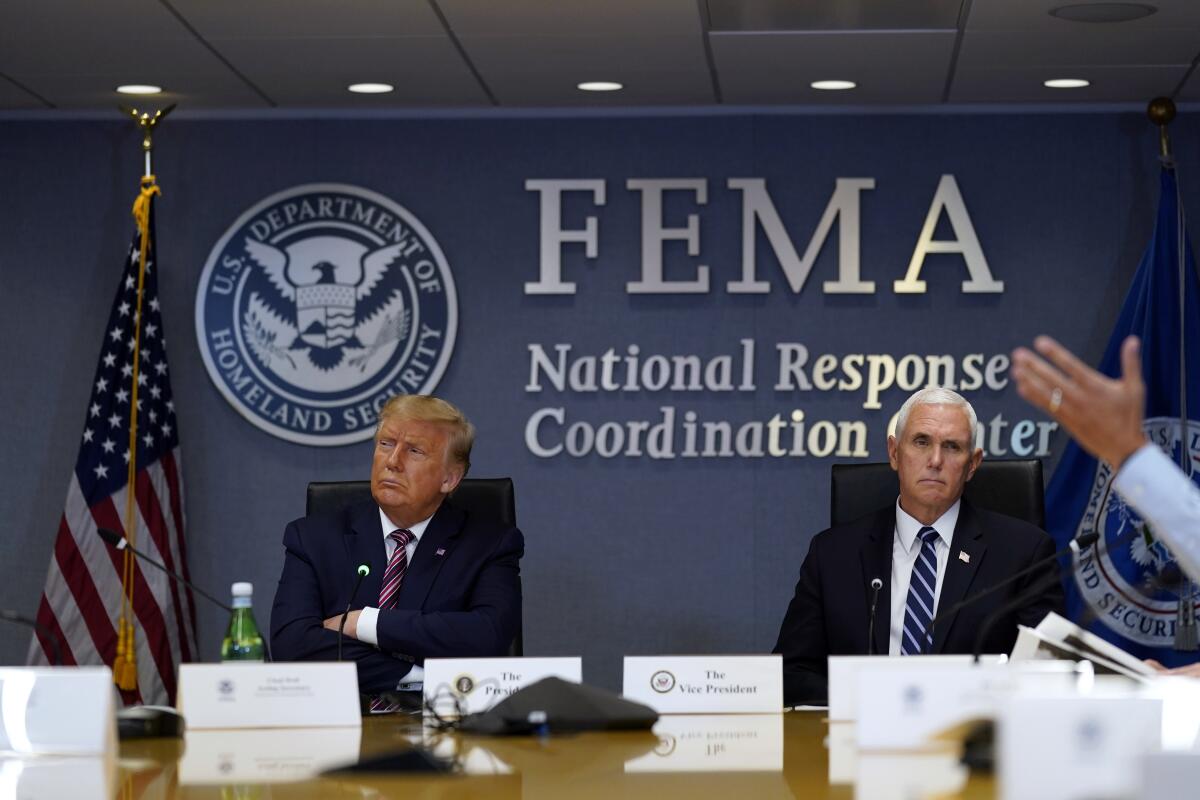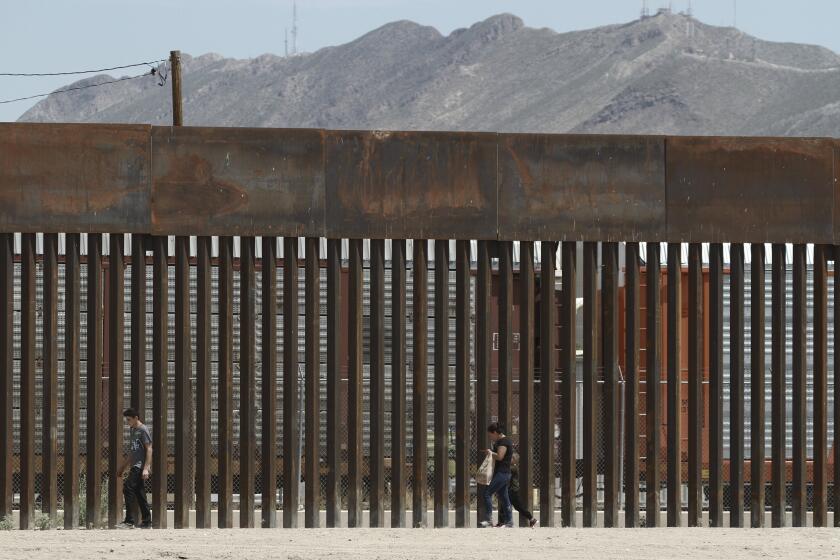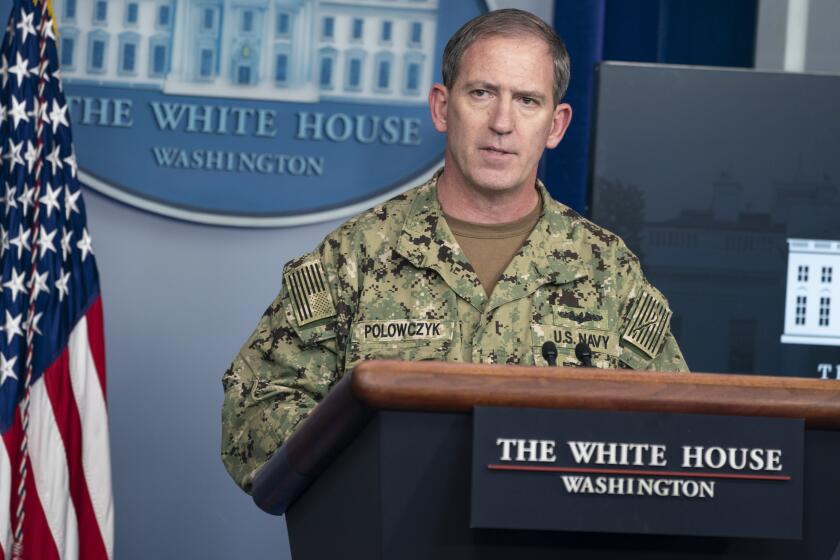Hurricane Laura further strains FEMA in disaster-filled year

- Share via
WASHINGTON — As it cut a destructive path through Louisiana and surrounding states, Hurricane Laura was also testing an already-stretched Federal Emergency Management Agency in what is shaping up to be a unprecedentedly disastrous year.
The federal disaster agency has a major role in hurricane response, working with state and local authorities to prepare beforehand and clean up and rebuild in the aftermath.
But FEMA, like the country as a whole, has never faced a year like 2020. In addition to COVID-19, which prompted emergency declarations for all U.S. states and territories for the first time, the agency has deployed personnel to help with the wildfires in the West and the damaging series of recent storms in Iowa.
“The only thing we can liken this to is 2017, which was one of our busiest years in decades,” said Steven Reaves, president of the FEMA employees union. “This is far eclipsing 2017.”
That year, 16 weather events, including Hurricane Maria, did a combined $306 billion in damage in the U.S., a record.
There are no signs yet that FEMA will be unable to adequately respond to Hurricane Laura, as the agency assesses damage and begins the process of parceling out federal contracts for what will inevitably be an expensive cleanup.
The response can have political consequences. That was a lesson learned perhaps most famously by President George W. Bush, whose popularity sank as a result of his administration’s handling of Hurricane Katrina and its aftermath in 2005.
President Trump, after receiving a briefing Thursday at FEMA headquarters, said the agency and local authorities had done a “fantastic job” and he plans over the weekend to visit Texas, Louisiana and perhaps another state affected by the storm. “We got a little bit lucky,” he said. “It was very big. It was very powerful. But it passed quickly.”
The Department of Homeland Security is moving $271 million from other agencies such as FEMA and the U.S.
FEMA Administrator Peter Gaynor said the agency can handle the hurricane even as he acknowledged the challenge posed by multiple crises.
“I think even in a normal hurricane season, a traditional hurricane season, it’s complicated enough,” Gaynor said on ABC’s “Good Morning America” on Thursday. “Responding to a hurricane in a COVID-19 environment makes it a little bit more complicated. But we’ve been working on this for a while, since May.”
Members of Congress have expressed concern for months about FEMA’s ability to deal with multiple disasters with leadership vacancies and strains on its budget. Reaves said there are also hundreds of rank-and-file jobs that need to be filled as well as fewer people available to deploy because of the coronavirus.
Those concerns grew after Trump issued an executive order to partially extend COVID-19 jobless benefits with $44 billion from the FEMA federal disaster fund after his administration failed to reach a deal with Congress to extend the benefits.
“The fact that President Trump would take up to $44 billion from FEMA’s disaster relief fund right before a possibly record-setting hurricane season shows his inability to protect our country during a crisis,” said Rep. Donald Payne, a New Jersey Democrat.
FEMA, in a written response to questions about the fund, said the executive order includes a provision that ensures the disaster fund won’t drop below $25 billion.
Acting Associate Administrator David Bibo said FEMA has what it needs to help affected communities through the “long and challenging road” to recovery from the storm.
As hospitals battle the coronavirus, they’re baffled as the Trump administration seizes hard-to-stock medical supplies.
“FEMA has sufficient resources to handle the ongoing response to Hurricane Laura as well as delivering other assistance that has been authorized and directed by the president,” Bibo told reporters. “We don’t have any limiting factors at this point.”
The concern about leadership vacancies isn’t new under a president who has said he prefers “acting” officials who can be easily removed and there are many throughout the Department of Homeland Security, which oversees FEMA.
A FEMA report on 2017 noted that staff shortages hindered the agency’s response to the series of storms that included hurricanes Harvey, Irma and Maria. It has made efforts to address the issue, but its training academy was forced to shut down for months this year because of COVID-19.
Reaves, the president of Local 4060 of the American Federation of Government Employees, said there are hundreds of open jobs, including for the people whose duties include evaluating damage from hurricanes and approving contracts for recovery. He cited the slow-process of conducting background checks and competition from private companies seeking to lure away FEMA workers, among other factors.
With a hurricane season that runs through Nov. 30 and fires still blazing in California, it may get worse.
“I can tell you from FEMA history what comes next,” Reaves said. “After the fires are over, what comes next? Mudslides and floods.”
More to Read
Sign up for Essential California
The most important California stories and recommendations in your inbox every morning.
You may occasionally receive promotional content from the Los Angeles Times.












